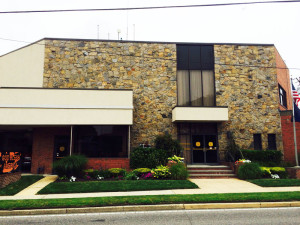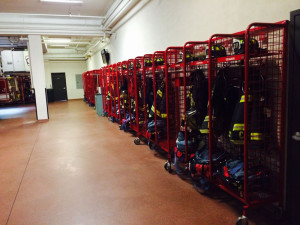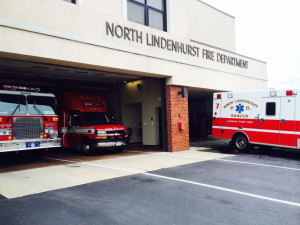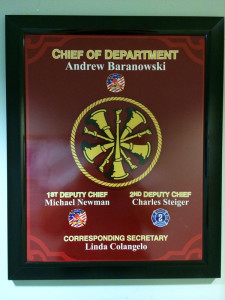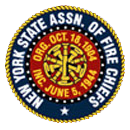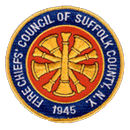
ABOUT NORTH LINDENHURST FIRE DEPARTMENT
A fire in a house at the corner of Seabro and Albany Avenues on Christmas Eve of 1956 claimed the life of a young child and further spurred the community-minded Civic Association to make the fire department a priority. The first and subsequent organizational meetings were held in the Civic Association hail on Straight Path and Sherbrooke Road. The first meeting was held on May 29, 1957.
With the cooperation of Town of Babylon Supervisor Donald Muncy, the Fire Department was officially organized and subsequently incorporated.
Original Organization
Temporary chairman Joseph Gately ran the first meetings until a president was elected. Harvey Schomberg of Company #1 was elected the department’s first President and Raymond Schneider, a New York City firefighter, was elected Vice President. On July 23, 1957, the Department received its charter papers and then became incorporated. The first election of Officers was held on October 2, 1957. There the members voted Edward Fink Chief of the Department and Russ Riddell as First Assistant Chief. There was no Second Assistant Chief at that time. A short time after going into active service, a second Assistant Chief was appointed to assist the Chief and also to have a Chief Officer around in the daytime. William Thomas was named 2nd Assistant Chief and later became Chief of the Department.
Badges were issued to the new members. Odd numbered badges were assigned to Company 1 and the even numbers went to Company 2. The men of the Department furnished their own uniforms, which were very basic. It consisted of black shoes, navy blue trousers, white shirt, black tie and fireman’s hat with a hat badge. The shirt had a shoulder patch, which was actually a Boy Scout patch that said: “North Lindenhurst.”
The very first parade the men marched in Lindenhurst, they took a trophy for “Best Appearing Men in the Line of March.” It was encouraging, especially because the Department was new to marching in fire department parades, although many of them were veterans of the Armed Forces and had many miles behind them marching in uniform.
Early Equipment
The North Lindenhurst Volunteer Fire Department, Inc., officially went into service January 1, 1960. They had two pieces of apparatus: Company 1 with a 1947 Mack pumper and Company 2 with a 1936 American-LaFrance.
The first engine, a 1936 American-LaFrance, was bought from the Hempstead Fire Department for $500 in 1958 and stored at North Babylon’s old firehouse on Belmont and Columbus avenues. The second engine, a 1947 Mack with a Hale pump was purchased from the Valley Stream Fire Department, on May 28, 1959 and was stored in the partially completed firehouse. Ironically, the Company 1 engine came from Valley Stream’s Engine Company 1 and the Company 2 engine came from Hempstead’s Engine Company 2.
In 1961, the old American-LaFrance engine was replaced with a brand new Mack engine with a 1 ,000-gpm pump and a 500-gallon water tank. The new engine cost the Department $24,000, an enormous sum, since they were only receiving about $40,000 per year from the Town. The American-LaFrance engine was given to the Fire Police Squad and was designated their official squad vehicle. A canvas cover was installed over the cab to protect the men from the weather. Appropriately, the unit was dubbed “the covered wagon.”
The following year, 1962, they purchased another new 1 ,000-gpm Mack pumper for about $40,000 and this truck had power steering, an improvement over the engine purchased the year prior.
Equipment carried aboard the engines was basic and standard equipment carried by the fire departments at the time. Each engine carried about 500 feet of 2-1/2-inch hose, about 250 feet of 1-1/2-inch hose, a 1-1/2-inch Navy nozzle capable of putting out 55 gallons per minute, a 2-1/2-inch Navy nozzle putting out 125 gallons per minute, a flat headed axe, a pick headed axe, a CO2 fire extinguisher, a 24-foot extension ladder, a 10-foot roof ladder, a pike pole, applicators for the Navy nozzles, a hose clamp and a door tool, a Halligan tool and two 10-foot lengths of hard suction.
First Firehouse
Seventy-five percent of the new firehouse was built by the membership. The ground was broken with the first stage of construction being the boiler room at the northwest corner. This section housed the heating boiler and the electrical panels. The basement area was dug out, footings were set in the ground, the walls went up and a wood floor was laid – all by the members. The membership comprised many trade craftsmen willing to work without pay for the worthy cause of having a firehouse in the community. Temporary electric power was supplied to the building by running a power cable from the Civic Association building.
The main section of the building was constructed of cement block walls and was done by a private contractor. When the outer walls were up, steel bar joists were delivered to the firehouse. Late one Saturday afternoon, the members could not do any further work because a crane hadn’t arrived to pick up the bar joists. While sitting around, they came up with the idea of raising the heavy steel joists themselves and so they placed them across the cement block walls. The members also laid the sub-flooring for the roof, which was made of Insulrock, on the following weekend. A roofing contractor installed the tar roof.
The concrete floor of the original truck house on the west side was nine inches thick with steel-reinforcing mats inserted halfway up. This floor was laid and leveled in one day. The main floor, which was the original meeting hail, was also made of poured concrete with wood joists set on the concrete. A wood floor, which was known as a floating floor, was installed. Department members did all the work.
Initial Instruction
The firemen had to learn the fundamentals of fire fighting. They attended fire school first at the Lindenhurst firehouse and then in the auditorium of William Rail School. Charles Vollmer from the Suffolk County Fire School was the instructor. Classes were taught on basic firefighting, extinguishers, ventilation, rope work, hydraulics, etc. Fire ground training was held at the fire-training center in Yaphank.
The future firefighters had to learn how to fight fires and operate the apparatus in order for the Department to go into active service on the first day in January 1960.
The membership was not covered by any insurance, and the Department was going into active service shortly. The members were assembled at the firehouse and, while standing on the dirt floor of the truck house, were sworn-in by Town of Babylon Supervisor, Arthur Cromarty, as members of the Civil Defense, temporarily until they could be covered by the Volunteer Firemen’s Benefits Law.
Just prior to going into active service, the members trained on the engines five nights a week, either drafting from a well or going through hose evolutions. Scott Paks were just about unheard of in those days and the only breathing apparatus available was called an M.S.A. It was a mask with a hose attached to a canister with charcoal inside. It was only good where there was enough oxygen in the air to sustain life. The rule was: if you see flames, you can go in. These were used exclusively for the first couple of years and ultimately were replaced with self-contained breathing apparatus.
Hectic History
The earliest days of fire alarm response were quite hectic. There weren’t any altering radios in the firemen’s homes and no radios on the fire apparatus. The only means of alerting members to alarms was the siren on firehouse the roof. Many couldn’t hear the siren, especially when sleeping, so the members made arrangements to have their wives make phone calls to some firemen so they could respond.
To complicate matters, East Farmingdale’s firehouse on Weliwood Avenue had the exact same siren. Many times, members barreled down to the firehouse thinking there was an alarm, only to find out it was East Farmingdale.
A 12-volt car horn was mounted next to the firehouse roof siren. It was blown a few seconds before the siren as an early warning to anybody working on the building to prevent any injuries from the piercing wail catching them by surprise.
The first fire alarm the Department responded to was a structure fire at Catskill Avenue and Sunrise Highway. It was 10:30 a.m. and bitter cold, on that first day in January 1960. The old American-LaFrance had to be pushed by the members almost to the intersection of Wellwood and Straight Path before it would start. When it did, there were about two dozen firemen crowded on the back step. The saying goes, according to old timers in the Department that it looked like a “Toonerville Trolley.” The “fire” was actu ally only steam coming out of the cement block factory at that location. Additionally, it was in the Village of Lindenhurst’s fire district. On July 2, 1960 at 2 p.m. the department responded to its first rescue call at 88 Heathcote Road for a female heart attack. She was transported to Lakeside Hospital.
Primitive Procedure
At that time, there was no base radio in the firehouse and all alarms came through the Suffolk County Police 1St Precinct, located in Town Hall on Sunrise Highway. The first member to arrive at the firehouse was required to answer the telephone and write the information about the alarm on a blackboard. Other arriving members checked the blackboard to find out the type of alarm and its location. Being dispatched by the Suffolk County Police whose officers were not all familiar with the fire district boundaries, the Department was often called to fires outside the North Lindenhurst fire district.
In the early days, 100 percent of the fire district did not have fire hydrants, which give a positive water pressure. They had fire wells and the engines’ pumps and hard suction connections had to be very tight in order to create a vacuum. This was a major concern to the officers at the scene of a fire. There were a number of incidents that turned out to be embarrassing to the Department due to the antiquated apparatus, inexperienced manpower, and working without communications.
It took fortitude to survive and get the job done. This all proved to be the groundwork for learning and would be passed onto future firefighters in the Department. The original members of the North Lindenhurst Volunteer Fire Department deserve a lot of credit for their sheer determination and foresight, not to mention the trials, tribulations and sacrifices they endured to make it a permanent entity, that would benefit the residents of the community forever.
Calls Commence
The first year of service to the community was a fairly busy one, with many brush fires and mutual aids to neighboring departments. On January 6, 1960, the old American LaFrance manned by Company 2 members was called to a standby at Lindenhurst Fire Headquarters on Weliwood Avenue. Twenty-five Company 2 members signed the alarm sheet that day.
On February 26, 1960, an alarm for a house fire at 288 East Heathcote Road was received at 8:50 p.m. and the Department responded. A fire in an attic closet was spreading and getting out of control. The firemen attacked with a booster hose and ran out of water. The first arriving unit 1-11-1 had only 250 gallons on board and when unit 111-2 dropped a supply line and proceeded to a well to draft water, they were unsuccessful initially and the Department had to call the West Babylon Fire Department on a mutual aid to assist.
On the night of March 21, 1960 at 9:05 the Department responded to the intersection of Sunrise Highway and Delaware Avenue, the scene of an auto accident where a dump truck struck the rear of a car stopped for the traffic light eastbound and ruptured its gas tank. Fortunately, there were no injuries. This was the first incident the Department responded to at that location – there were many more in the years to come.
The biggest fire that the Department was called to was at 9:45 p.m. on February 21, 1960. A large barn behind the Old Age Home on Schleigel Boulevard was fully involved when unit 1-11-1, the 1946 Mack, turned onto Trinity Road. The whole sky was lit up and every stud and rafter in the barn could be seen burning fiercely. The Department was at the fire all night and mutual aid from many departments was called.
On Sunday afternoon, March 27, 1960, the Department responded to a mutual aid call to East Farmingdale at Route 109 and northeast comer of Wellwood Avenue – a landmark known as Danny Boyle’s. The notable bar and motor inn was fully involved and ultimately destroyed.
On April 2, 1960 a major fire in Lindenhurst destroyed a number of stores at the southwest corner of Hoffman and Wellwood. Unit 1-11-2 responded and N.L.F.D. men helped fight the fire. It started in what was known as the Dutchess Shoppes and spread to about six other stores on that Saturday afternoon.
On the night of April 13, 1960 at 12:35 a.m. the Department received an alarm for a house fire at 28 Liebrock Avenue, east of the railroad tracks, in the West Babylon fire district. At that time, there were no radios on the apparatus and being unfamiliar with the area, unit 1-11-71 rode around unable to find the fire. Upon verifying the location, unit 1-11-1 proceeded to the house fire. While Chief Ed Fink and about two dozen members stood outside the firehouse, Company 1 shot past at full speed with siren wailing and finally arrived at the scene about fifteen minutes after the original alarm. Fortunately, the fire was out. This incident became known as “the midnight ride of the North Lindenhurst Fire Department.”
Department Development
The department was started with one engine, and in 1957 twenty-two names were submitted to the Town of Babylon for membership. Fifty years later, the North Lindenhurst Fire Department has a membership over one hundred members. Presently, the department consists of the following vehicles: three engines, one tower ladder, a fire police vehicle, two ambulances, three Chiefs’ vehicles and several service vehicles; rack truck, pick-up truck, 16-passenger van, tractor trailer for emergency purposes and to transport drill team vehicles and fire prevention trailer. The organization of the Piston Knockers Drill Team in November of 1964 jumpstarted a tournament career that includes New York State Champion titles for the years 1981, 1995, 1996, 1997 and 1998. Overall, they have 59 victories to date. Current Captain Kevin Connell, Lieutenant Christopher Connell and Secretary/Treasurer Michael J. McNamara ensure the Knockers remain competitive.
Since the team’s inception, the “Hitmen” softball team has amassed Town of Babylon championships in 1993, 1997, 1998, 1999, 2002, 2003, 2004 and 2005. Current Managers are Daniel Raccomandato and Stephen Falco.
Interestingly, the following families are third generation members: Connell, Fries, Gumowski, Reutlinger, Schafer and Singer.
The North Lindenhurst Fire Department responds to over 900 rescue calls and 300 various fire calls per year. The Fire Prevention Program is presented to over 1,000 children each year and it is also presented to the senior residents of Dominican Village. First Aid programs are provided to various organizations by the department.
Members have been training for fifty years in the following capacities: confined space, heavy rescue, railroad emergencies, wildfire operations, rapid intervention teams and weapons of mass destruction. They responded to the 1995 brush fires out east and were available to assist during the Flight 800 tragedy. N.L.F.D. ambulances initially responded to 9/11. They were responsible for delivering donated supplies and assisting residents to retrieve their belongings.
Although the building has changed, equipment and vehicles have improved and the number of personnel has increased, the original concept has not changed. Forming a group of volunteers willing to serve the community by protecting its life and property has been constant for the past fifty years.
NORTH LINDENHURST
FIRE DEPARTMENT
1630 Straight Path
Lindenhurst, NY 11757
Tel. (631) 957-1457
Fax. (631) 957-1302
NLFD OFFICERS
Christopher Connell – Department Chief
Kenneth Stallone – 1st Depty Chief
Corey Finn – 2nd Deputy Chief
Shawn Lutgens – President
Brian Gassen – 1st Vice President
Kevin Connell – 2nd Vice President







